July introduced me to depths of our forest more beautiful than I could have imagined. At the beginning of the month, my co-intern, Emma, and I embarked on an exclusively seed-collecting trip around Huntington Lake. Before we left, we went to the library to do some research. Using many different sources, we scoped out some of the plants that we have been keen to collect this season, compiling information regarding their identifications, confirmed and probable growing locations, and phenology. Based on our research, we knew that we would utilize this trip to preliminarily assess populations, getting vouchers and initial estimates of population sizes to inform potential future trips for collections and for our records. Our priority populations included Mountain coyote mint, (Monardella odartissima var lechtinii), Western wallflower (Erysimum capitatum), Stickseed (Hackelia mundula), Anderson’s thistle (Cirsium andersonii). We also kept an eye out for some rare plants we knew were in the area (just for fun!) including Hulsea brevifolia, an aster that is abundant around Huntington Lake.
The next week was a departure from our normal activities: chainsaw training. We underwent this training in order to be better prepared to evacuate an area under immediate threat of wildfires. This same week, we were informed of the urgent need to survey an area for Whitebark pine (Pinus albicaulis) in the John Muir Wilderness in our forest. This is a threatened species under the endangered species act is a white pine, containing needle bunches of five, that grows at subalpine and timberline elevations. We were enlisted to help, so we worked a great deal to get some last-minute trip planning done.
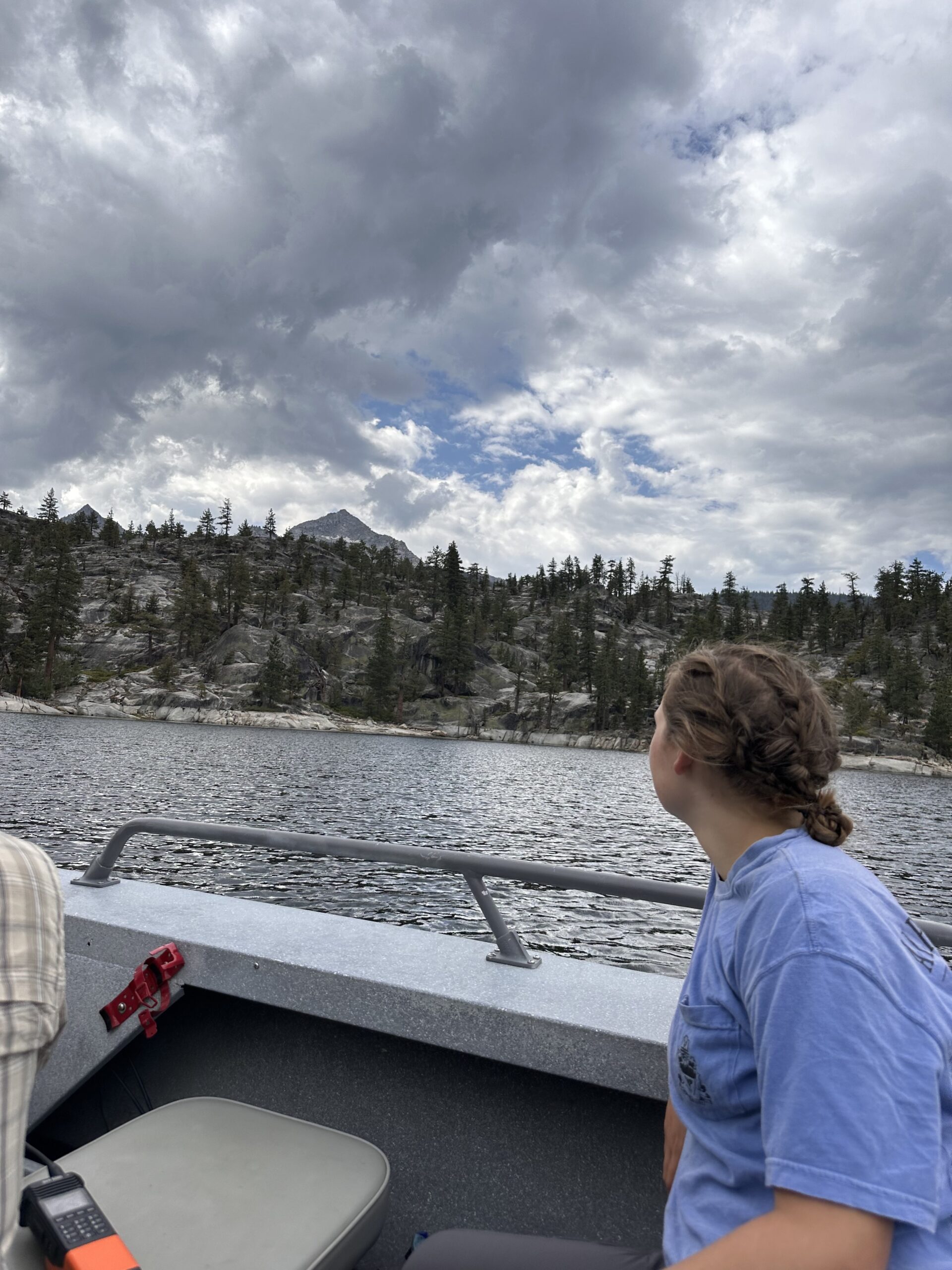

We began this following week on Sunday, packing and collecting the materials we needed–cleaning bear canisters, stocking up on batteries/chargers, readying tablets and radios, prepping the field press. We drove over Kaiser Pass to Florence Lake where we camped before taking the ferry across the lake in the morning to begin our trek. We stayed this first night in the backcountry at the Muir Trail Ranch, then completed our hike to the study area the next morning. We surveyed that day and much of the next prior to our hike out. We found a much larger population than anticipated, but we were bummed to see that most of the individuals had been infected with the blister rust, which poses a mortal threat to white pines.
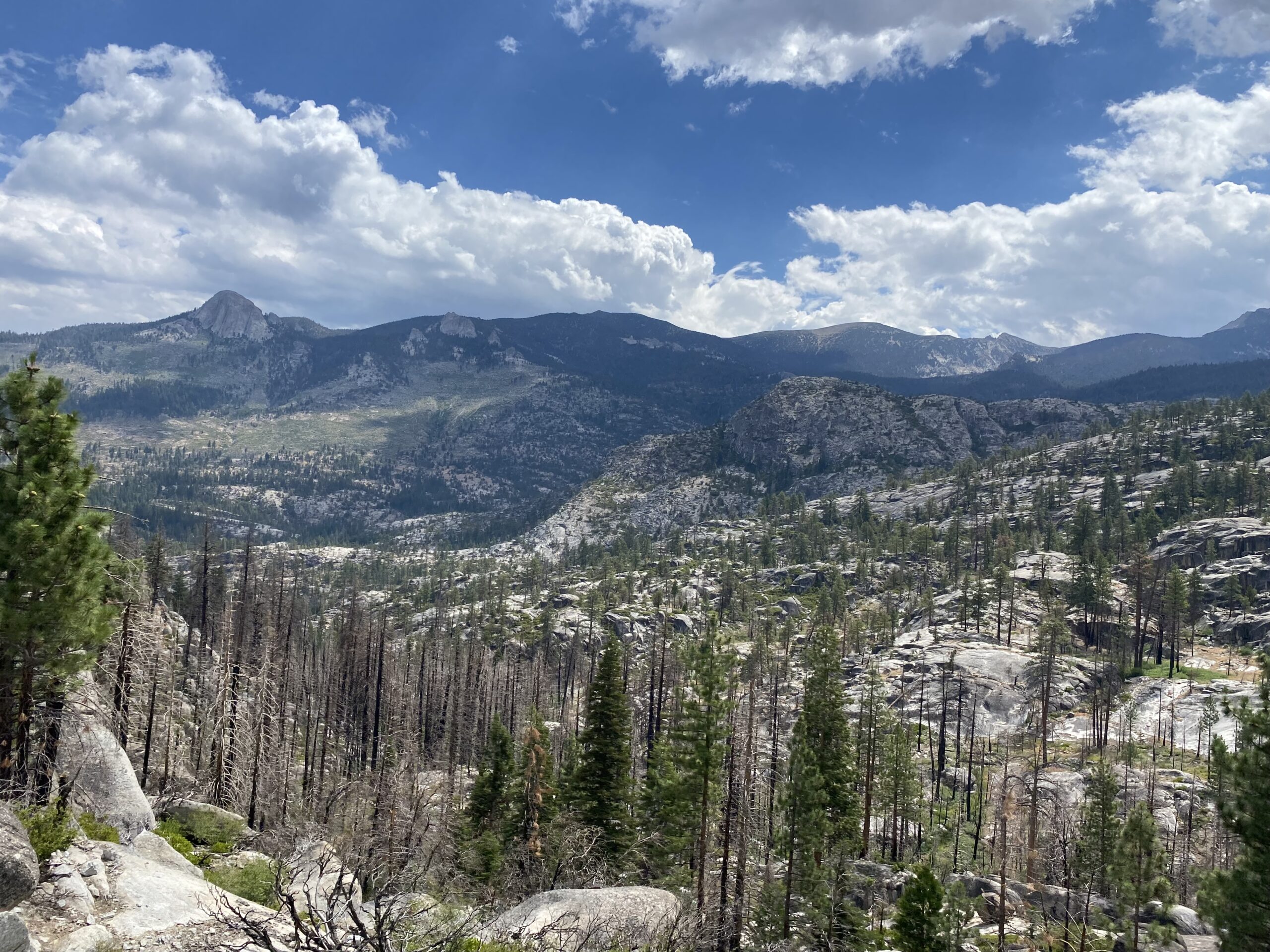
Although we were overjoyed to help out on this survey for this endangered species, Emma and I were, of course, relentlessly occupied with seed collection. We had little time for it, but we still jotted down some population locations and estimated specifications, as well as collected some vouchers in hopes that we will be able to return and collect seeds from those plants. Here, we noted a population of Anderson’s thistle even stronger than that we had seen at Huntington Lake, and got excited about a native Elymus species (yet to be indubitably verified)!

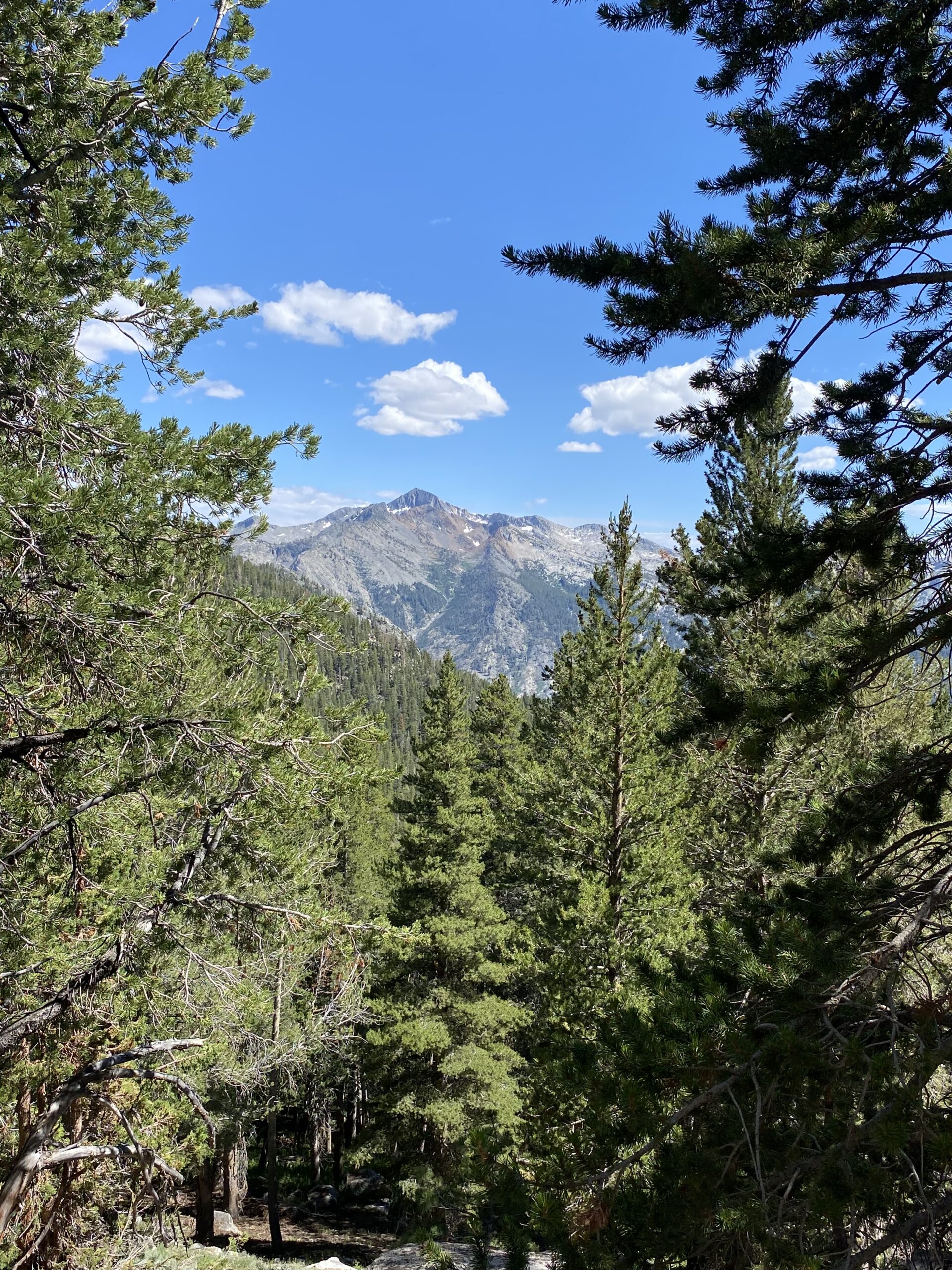
Something that has become beautifully apparent and that I consider rather beautiful about my time working this field job is the intimacy of learning the plants and the opportunity to get to know them on a deeper level. Previously, I would memorize morphological characteristics and ecological for classes or for jobs—often without actually seeing them in real life—and would not form any sort of personal connection with them. Now, I can touch the plants, hold their seeds in my hands, smell them (big shoutout to Jefferey Pine!), better understand their ecological niches… and better understand them overall!
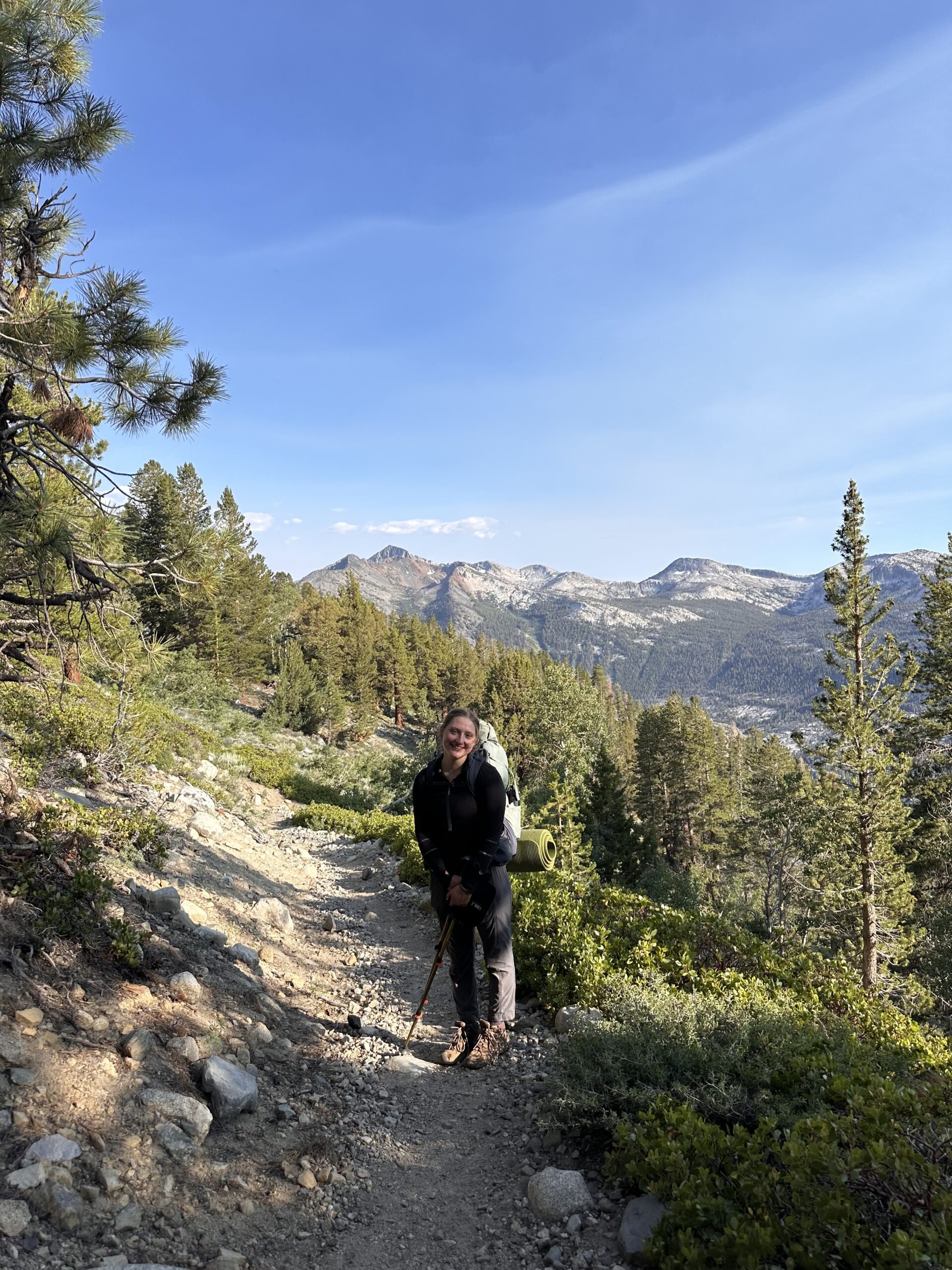
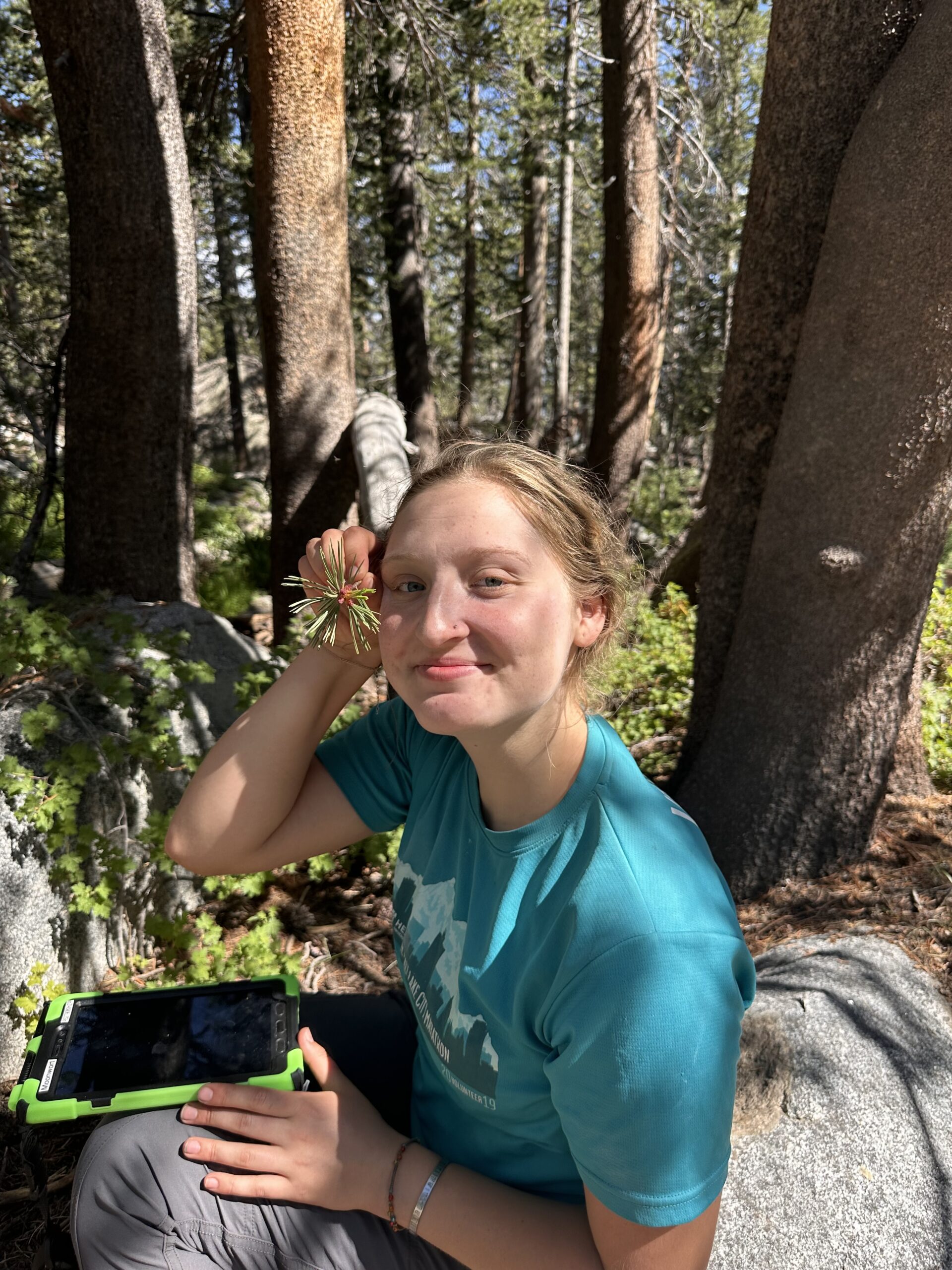
Until next month… hugs from SNF! XOXO
Elanor
